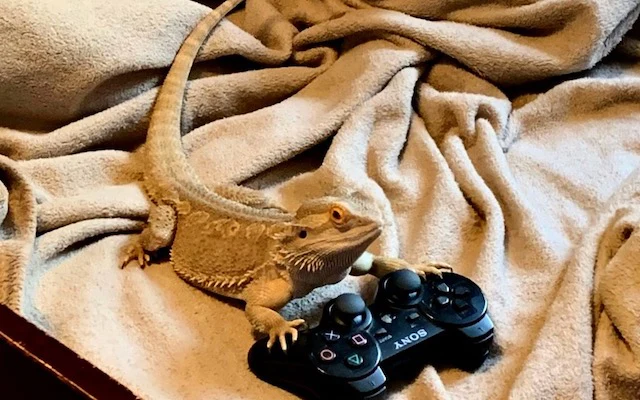Introduction: Misconceptions and the Importance of Correct Pet Care
There is a myriad of misconceptions surrounding pet care, often leading to unintentional harm or stress to our beloved companions. Unfounded myths can range from feeding practices to behavioural training, each with potential implications on your pet’s health and happiness.
Understanding correct pet care is paramount for the wellbeing of pets. Our pets rely on us for their basic needs – food, shelter, and healthcare. Misinformation can endanger these essentials, hence, it’s crucial to debunk common pet myths.
As we delve into debunking common pet myths, we strive to equip pet owners with accurate and reliable information. This is not only beneficial for the pets but also promotes a more harmonious and rewarding relationship between pets and their owners.
Myth 1: Cats Always Land on Their Feet
One commonly held belief is that cats always land on their feet, a myth that likely stems from the cat’s extraordinary agility and balance, observed in their mid-air ‘righting reflex’. This ability, stemming from the cat’s flexible backbone and lack of a functional collarbone, enables them to twist their bodies in mid-air. However, it’s crucial to note that this doesn’t guarantee a safe landing every time.
Scientific research demonstrates that cats can sustain severe injuries from high falls, particularly when they don’t have enough time to correct their position. The idea that cats can survive any fall is a dangerous misconception.
To ensure the safety of our feline friends, it’s essential to keep windows and balconies secure.
Myth 2: Dogs See in Black and White
One of the most enduring myths about our canine companions is the belief that they only see in black and white. This misconception stems from early 20th-century research that suggested dogs lacked colour perception.
Modern research, however, tells a different story. Studies show that dogs, in fact, can perceive colours, albeit differently from humans. Dogs’ colour vision is similar to a human with red-green colour blindness. This means they can see blue and yellow shades but not red or green ones.
Understanding dogs’ colour perception can significantly enhance their training and care.
For instance, using coloured toys that are within their visible spectrum can make play and training sessions more stimulating and effective.
By debunking this myth, we can better cater to our dogs’ needs and improve their overall wellbeing. So next time you consider buying a new toy for your furry friend, bear in mind their unique colour perception!
Myth 3: Fish Have Short-Term Memory
One of the most prevalent misconceptions surrounding fish is the belief that they possess merely a three-second memory span. However, scientific research has consistently debunked this myth, demonstrating that fish have much more complex cognitive abilities than what is popularly believed.
Studies conducted on different species of fish, such as the Goldfish and African Cichlids, have shown that they can remember information for up to several months. These findings emphasise that fish are capable of learning and retaining information, contradicting the common perception of their forgetful nature.
Understanding the cognitive capabilities of fish is crucial for their well-being. A mentally stimulated fish is a healthy fish. Therefore, providing them with an environment that encourages their natural behaviours, including exploratory and foraging activities, can greatly enhance their quality of life.
As pet owners, it’s our responsibility to ensure that we’re not only providing for our pets’ physical needs, but their mental needs as well. Let’s put this fish myth to bed and start treating our underwater friends with the respect they deserve.
Myth 4: Rabbits Thrive on a Carrot-Only Diet
One widespread myth, largely propelled by popular cartoons, is that rabbits sustain and thrive on a diet exclusive to carrots. While carrots are a safe treat for rabbits, they should not constitute their entire diet due to their high sugar content. The Royal Society for the Prevention of Cruelty to Animals (RSPCA) warns against the potential health risks of a carrot-only diet, including obesity, dental disease, and vitamin A toxicity.
Rabbits require a balanced diet comprising hay, fresh vegetables, water, and a small number of pellets. Hay, ideally Timothy or meadow hay, should make up 85-90% of their diet, as it is crucial for dental health and digestion. Fresh vegetables provide essential vitamins and minerals, while a controlled number of pellets ensure optimum protein intake.
For more detailed dietary guidelines, consult the RSPCA’s guide to a balanced and healthy rabbit diet. This will help debunk the carrot myth and promote the well-being of your pet rabbit.
Myth 5: Birds Should Be Kept in Cages All the Time
One common misconception circulating among pet owners is that birds should be confined to their cages all the time. This myth could potentially lead to significant harm to birds, as it neglects the critical importance of physical exercise and mental stimulation for their overall wellbeing.

It’s essential to provide opportunities for your bird to engage in out-of-cage activities. This practice not only encourages physical exercise but also stimulates their mental faculties. However, these sessions need to be carefully supervised to ensure safety. You can create a secure environment using bird-friendly play stands or hanging toys.
Remember, the key is to strike a balance between providing your bird with a safe haven (its cage) and allowing it the freedom to explore, play and fly.
Myth 6: All Reptiles Should Be Kept in a Terrarium

Commonly, pet owners believe that all reptiles need to be housed in terrariums. This myth can be detrimental to certain reptile species, as they require unique habitats that a terrarium may not provide. Just like dogs vary greatly in size and temperament, reptiles have a wide variety of needs too. From desert dwellers like bearded dragons to aquatic species like eastern long-necked turtles, each species has specific requirements that need to be met.
Creating the ideal habitat for your reptile is crucial. It’s important to research and understand your pet’s natural habitat. For example, a desert reptile may require a heat lamp, while an aquatic turtle would need a water filter. The Australian Department of Agriculture, Water and the Environment provides a wealth of information on caring for native reptiles, including habitat requirements.
Remember, there’s no one-size-fits-all when it comes to reptile habitats. Always consult an expert or a reliable source before setting up your reptile’s home.
Conclusion: Dispelling Myths and Embracing Responsible Pet Ownership
In this enlightening journey, we’ve tackled and debunked numerous pet myths, highlighting the importance of informed and responsible pet care. From the myth of a dog’s mouth being cleaner than a human’s to cats having nine lives, we’ve shattered misconceptions with science-backed facts.
Our interaction with pets goes beyond companionship; they rely on us for their wellbeing. Therefore, it’s vital to challenge the status quo, question pet care norms, and strive for continuous learning.
The Australian government’s guidelines on responsible pet ownership provide a useful starting point. It is our role to ensure we provide the best possible life for our pets, and that starts with knowledge and understanding.
Let’s continue to debunk myths, spread awareness, and make the world a better place for our lovable companions.
Related posts
Recent Posts
- Choosing Between a Shelter, Rescue, or Breeder for Your New Pet
- Pet Emergency Preparedness: Ensuring Your Furry Friend’s Safety in a Crisis
- The Importance of Pet Vaccinations: Protecting Your Furry Friends
- Kitten Feeding Guide: Essential Tips for New Cat Owners
- Dangerous Pets: What You Need to Know Before Bringing One Home


